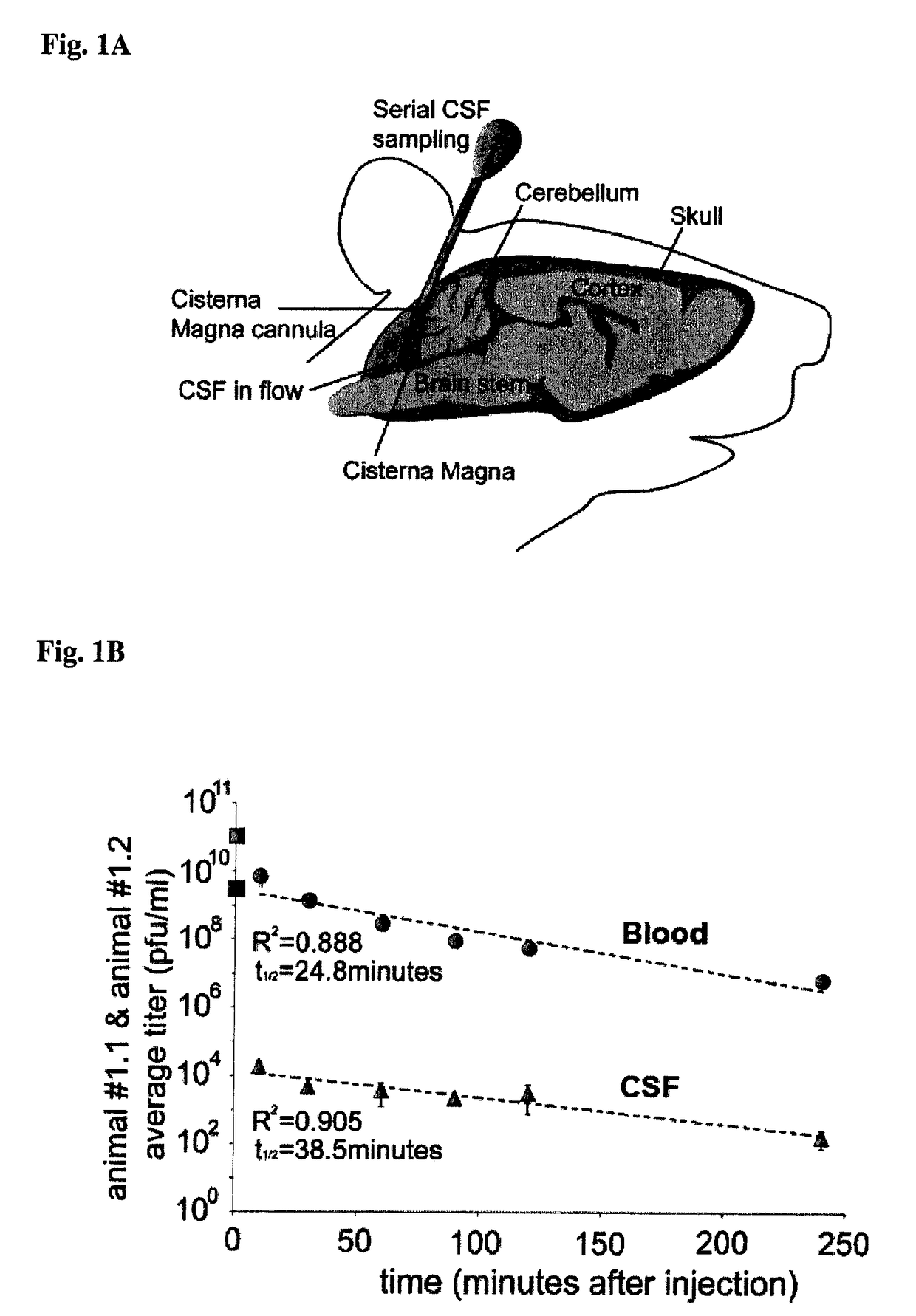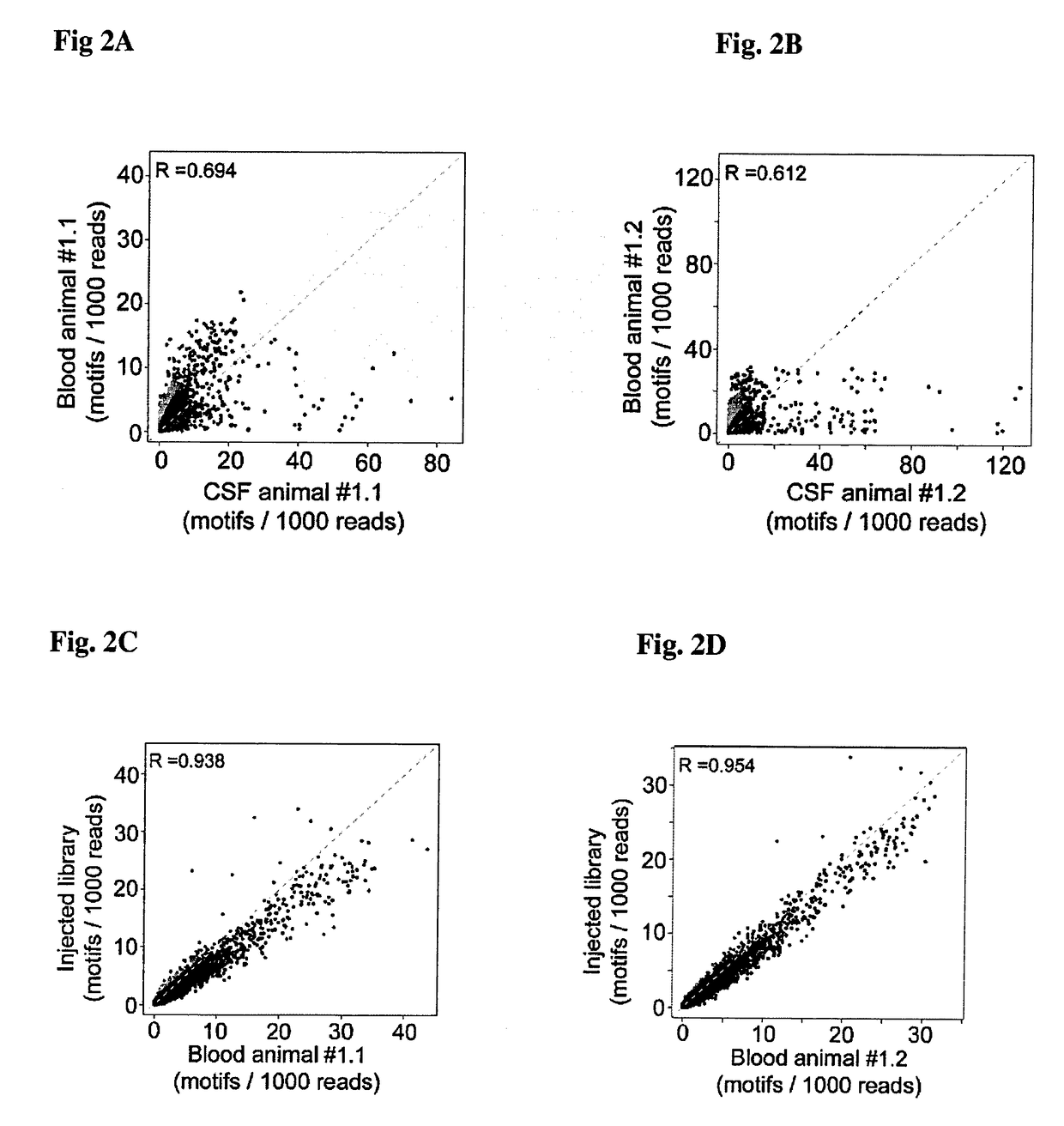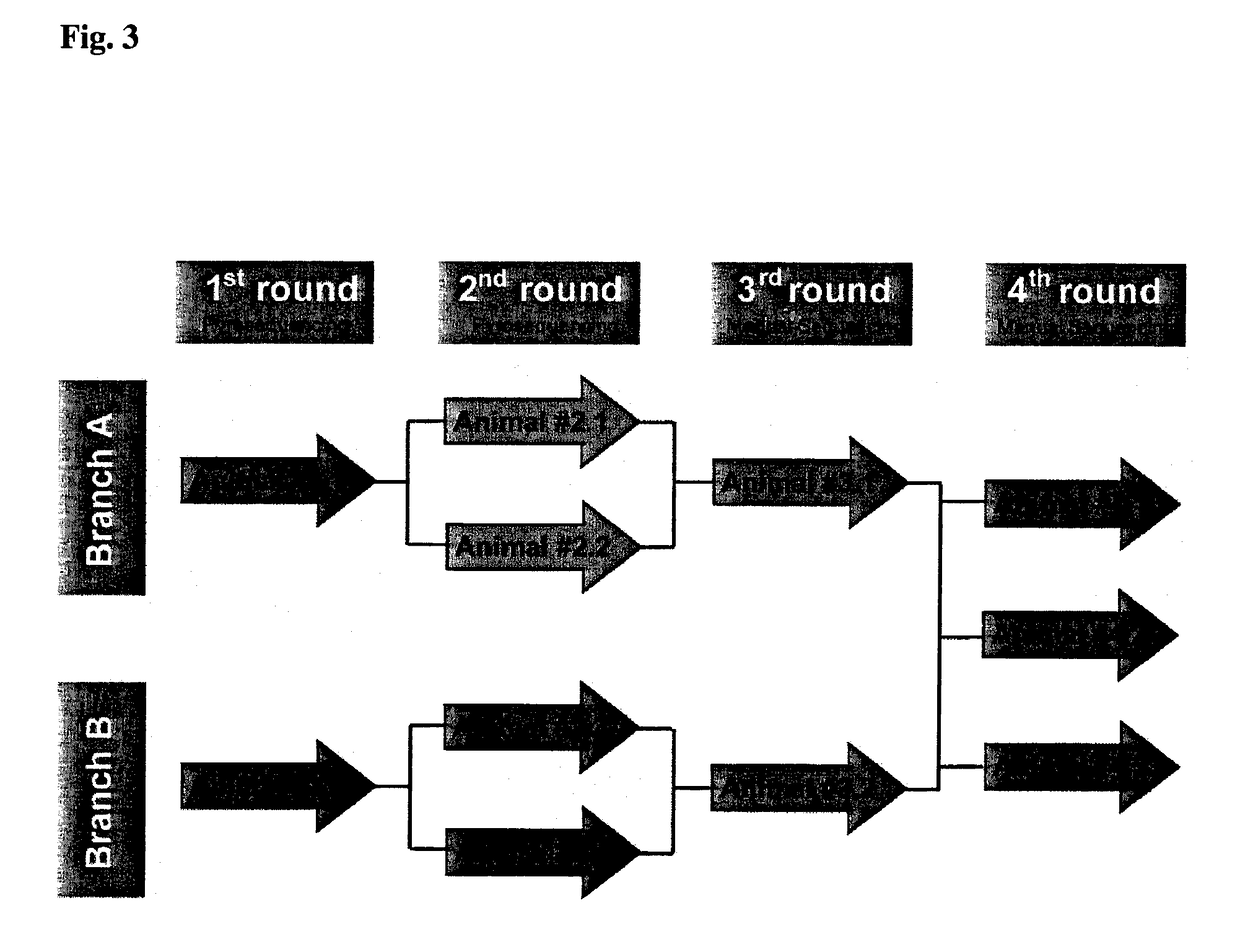Blood brain barrier shuttle
a brain barrier and shuttle technology, applied in the field of peptides, can solve the problems of limiting any pharmacological effect, unable to fully investigate, and unable to accumulate within certain limits,
- Summary
- Abstract
- Description
- Claims
- Application Information
AI Technical Summary
Benefits of technology
Problems solved by technology
Method used
Image
Examples
example 1
Implantation of the Cannula in the Cisterna Magna
[0071]The cisterna magna (CM) was cannulated using modification of methods previously described by Sarna et al. (1983) (Waring et al. 2010, 192 249-253) (Sarna et al. 1983, 383-388). Anesthetized Wistar rats (200-350 g) were mounted onto a stereotaxic device and a median incision was made on the top of the shaved head all the way back to the inter-scapular region. Two holes were drilled at the parietal region and mounting screws were secured in the holes. An additional hole was drilled at the external occipital crest and used to stereotactical guide the cannula into the CM. Dental cement was applied around the cannula and the screws to hold it in place. After the cement dried, the skin wound was sutured with a 4 / 0 supramid yarn. A spontaneous flow of cerebrospinal fluid (CSF) occurs when the cannula is placed well. The rats were removed from the stereotaxic apparatus, received appropriate post-operative analgesic treatment and allowed...
example 2
llection of CSF and Blood from Non-Anesthetized Adult Rats
[0072]The CM cannulated awake rats were gently held in the hand. The mandrain was pulled out of the cannula and 10 μL of the spontaneous flowing CSF was collected. Only clear CSF samples with no sign of blood contamination or discoloration were included in this study since patency of the cannula was eventually compromised. In parallel 10-20 μL blood from a small incision of the tip of the tail was collected in heparin (Sigma Aldrich) containing tubes. CSF and blood was collected at different time points after intravenous injection of the bacteriophages. Prior to collecting every CSF sample 10-15 μL of fluid was discarded, which represents the catheter dead volume.
example 3
[0073]Library was constructed using the T7Select 10-3b vector as outlined in the T7Select System Manual (Novagen) (Rosenberg et al. InNovations 6, 1-6 1996). Briefly, random 12-mer insert DNA was synthesized in the following format:
(SEQ. ID. NO. 37)5′-GGGGATCCGAATTCT(NHH)12TAAGCTTGCGGCCGCA-3′(SEQ. ID. NO. 38)←3′-TCGAACGCCGGCGT-5′
[0074]NHH codons were used to avoid two stop codons and an overrepresentation of amino acids within the insert. N stands for a hand-mixed equimolar ratio of each nucleotide and H is a hand-mixed equimolar of both adenine and cytosine nucleotides. The single stranded regions were converted to duplex DNA by continuing incubation at 37° C. with dNTPs (Novagen) and Klenow enzyme (New England Biolabs) in Klenow Buffer (New England Biolabs) for 3 h. After the reaction, double-stranded DNA was recovered by EtOH precipitation. The obtained DNA was digested with EcoRI and Hindlll restriction enzymes (both from Roche). The digested and purif...
PUM
| Property | Measurement | Unit |
|---|---|---|
| diameter | aaaaa | aaaaa |
| length | aaaaa | aaaaa |
| neurodegenerative disorder | aaaaa | aaaaa |
Abstract
Description
Claims
Application Information
 Login to View More
Login to View More - R&D
- Intellectual Property
- Life Sciences
- Materials
- Tech Scout
- Unparalleled Data Quality
- Higher Quality Content
- 60% Fewer Hallucinations
Browse by: Latest US Patents, China's latest patents, Technical Efficacy Thesaurus, Application Domain, Technology Topic, Popular Technical Reports.
© 2025 PatSnap. All rights reserved.Legal|Privacy policy|Modern Slavery Act Transparency Statement|Sitemap|About US| Contact US: help@patsnap.com



